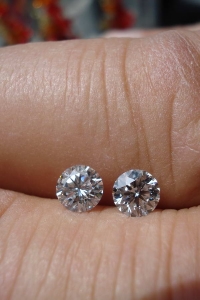Hi guys,
What are the best possible numbers for 60/60 cut? What would be the main differences between best possible 60/60 cut and super ideal TIC? Is it worth to pay premium for "super ideal", if you can have a larger 60/60 for the same price? What do you think about this numbers:
1.51 ct
7.39 x 7.42 x 4.47
depth 60.4%
table 59%
CA 33.5
PA 40.8
SL 50%
LGF 75%
crown height 13.5%
pavilion depth 43%
girdle 4% medium-slightly thick
What are the best possible numbers for 60/60 cut? What would be the main differences between best possible 60/60 cut and super ideal TIC? Is it worth to pay premium for "super ideal", if you can have a larger 60/60 for the same price? What do you think about this numbers:
1.51 ct
7.39 x 7.42 x 4.47
depth 60.4%
table 59%
CA 33.5
PA 40.8
SL 50%
LGF 75%
crown height 13.5%
pavilion depth 43%
girdle 4% medium-slightly thick









300x240.png)